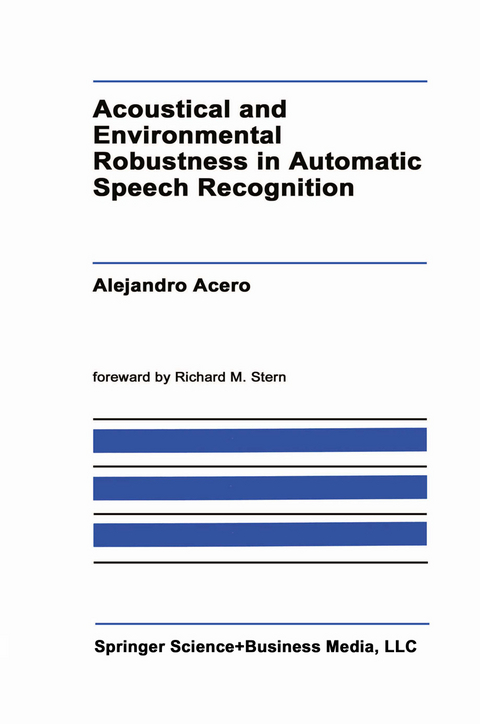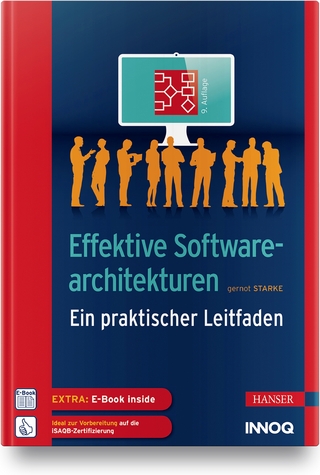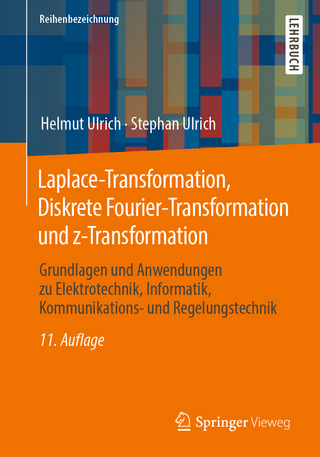
Acoustical and Environmental Robustness in Automatic Speech Recognition
Springer-Verlag New York Inc.
978-1-4613-6366-8 (ISBN)
List of Figures.- List of Tables.- Foreword.- Acknowledgments.- 1. Introduction.- 1.1. Acoustical Environmental Variability and its Consequences.- 1.2. Previous Research in Signal Processing for Robust Speech Recognition.- 1.3. Towards Environment-Independent Recognition.- 1.4. Monograph Outline.- 2. Experimental Procedure.- 2.1. An Overview of SPHINX.- 2.2. The Census Database.- 2.3. Objective Measurements.- 2.4. Baseline Recognition Accuracy.- 2.5. Other Databases.- 2.6. Summary.- 3. Frequency Domain Processing.- 3.1. Multi-Style Training.- 3.2. Channel Equalization.- 3.3. Noise Suppression by Spectral Subtraction.- 3.4. Experiments with Sphinx.- 3.5. Summary.- 4. The SDCN Algorithm.- 4.1. A Model of the Environment.- 4.2. Processing in the Frequency Domain: The MMSEN Algorithm.- 4.3. Processing in the Cepstral Domain: The SDCN Algorithm.- 4.4. Summary.- 5. The CDCN Algorithm.- 5.1. Introduction to the CDCN Algorithm.- 5.2. MMSE Estimator of the Cepstral Vector.- 5.3. ML Estimation of Noise and Spectral Tilt.- 5.4. Implementation Details.- 5.5. Summary of the CDCN Algorithm.- 5.6. Evaluation Results.- 5.7. Summary.- 6. Other Algorithms.- 6.1. The ISDCN Algorithm.- 6.2. The BSDCN Algorithm.- 6.3. The FCDCN Algorithm.- 6.4. Environmental Adaptation in Real Time.- 6.5. Summary.- 7. Frequency Normalization.- 7.1. The Use of Mel-scale Parameters.- 7.2. Improved Frequency Resolution.- 7.3. Variable Frequency Warping.- 7.4. Summary.- 8. Summary of Results.- 9. Conclusions.- 9.1. Contributions.- 9.2. Suggestions for Future Work.- Appendix I. Glossary.- Appendix II. Signal Processing in Sphinx.- Appendix III. The Bilinear Transform.- Appendix IV. Spectral Estimation Issues.- Appendix V. MMSE Estimation in the CDCN Algorithm.- Appendix VI. Maximum Likelihood via the EM Algorithm.- Appendix VII. ML Estimation of Noise and Spectral Tilt.- Appendix VIII. Vocabulary and Pronunciation Dictionary.- References.
| Reihe/Serie | The Springer International Series in Engineering and Computer Science ; 201 |
|---|---|
| Zusatzinfo | XXI, 186 p. |
| Verlagsort | New York, NY |
| Sprache | englisch |
| Maße | 155 x 235 mm |
| Themenwelt | Mathematik / Informatik ► Informatik |
| Technik ► Elektrotechnik / Energietechnik | |
| ISBN-10 | 1-4613-6366-7 / 1461363667 |
| ISBN-13 | 978-1-4613-6366-8 / 9781461363668 |
| Zustand | Neuware |
| Haben Sie eine Frage zum Produkt? |
aus dem Bereich


